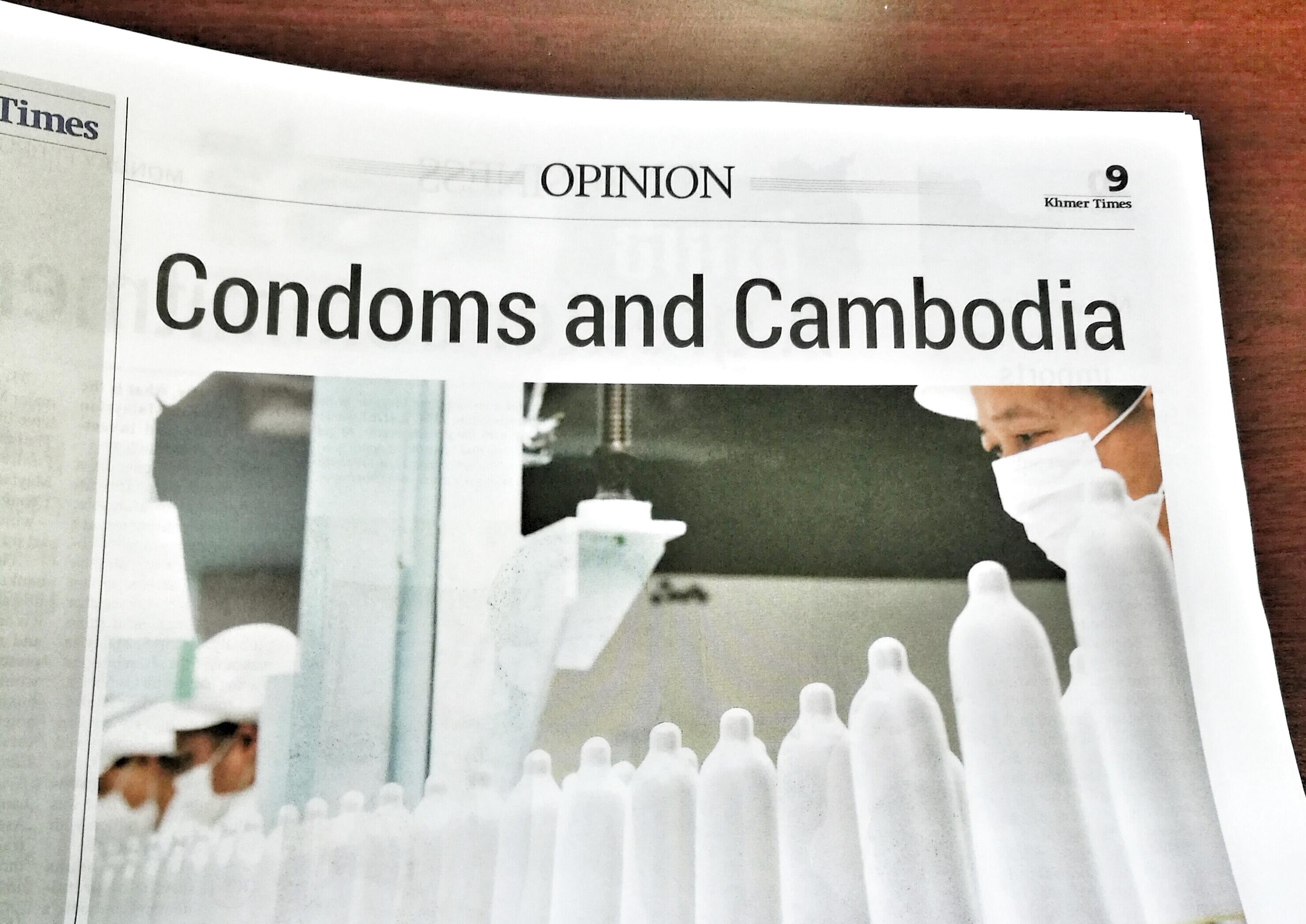Published in Khmer Times: http:/www.khmertimeskh.com/news/35369/condoms-and-cambodia/
By Marie-Odile Emond, UNAIDS Country Director and Catherine Breen Kamkong, UNFPA Deputy Representative
Srey Chea, who prefers to use a pseudonym, is married, but the former Cambodian civil servant has a strict condom policy with her husband.
“Even when my husband gets drunk and wants to have sex without a condom, I remind him to use one,” she tells an interviewer.
Srey Chea’s insistence is because she is living with HIV, whereas her second husband is not. This kind of quiet, but firm negotiation between couples and sex partners has helped save many lives.
The slogan “No condom, no sex” is a hallmark of Cambodia’s 100 percent condom use program. On International Condom Day, UNAIDS and UNFPA applaud the initiative which was introduced almost 20 years ago at the height of the country’s AIDS epidemic.
By any measure, the program has been highly successful. In the early days it was instrumental in controlling HIV infections in sex work settings and more than 80 percent of sex workers reported using a condom during their last sexual intercourse.
The 100 percent condom use program has expanded to ensuring access to condoms for other key populations at higher risk of HIV such as people who inject drugs, gay men and other men who have sex with men and transgender people.
Strawberry or banana, dotted or ribbed, ultra-thin or ultra-big condoms for a wide range of customer needs are widely available in convenience stores, pharmacies, supermarkets, hotels, guesthouses and other venues across Cambodia. National HIV prevalence has dropped from a peak of 1.7 percent in 1998 to 0.6 percent in 2015.
Condoms, both male and female, are the only technology that effectively prevents the sexual transmission of HIV and other sexually transmitted infections (STIs), as well as unintended pregnancies.
They are inexpensive, easy to use for anyone who is sexually active and cost-effective. A global modeling analysis estimated that condoms have averted about 50 million new HIV infections since the start of the AIDS epidemic more than three decades ago.
However, there are signs of “condom fatigue” and fading popularity around the world, including in Cambodia. Population Services Khmer reports that condom sales through social marketing have sharply declined from 27 million condoms sold in 2008 to 12 million in 2015.
This kind of apathy threatens the achievements that have made Cambodia’s HIV program a global model. More than two-thirds of Cambodia’s population are young people between the ages of 10 and 24 – precisely the age group when many people have their sexual debut.
Srey Chea’s son is a university student and he is also living with HIV. His mother says she is confident that her son will act responsibly and use condoms when he has sex.
Thanks to Srey Chea’s support, her son has the knowledge and skills to make an informed decision about his use of condoms. However, many young people in Cambodia do not have adequate knowledge of sexual and reproductive health issues.
Often, existing cultural barriers make it difficult to discuss such sensitive issues openly with friends and family. Large numbers of youth are also leaving home for urban areas in search of better opportunities, making them especially vulnerable to sexual and reproductive health risks and gender-based violence.
Between 2005 and 2014, condom use among young people dropped significantly across all education levels. For example, for young men with more than a secondary level of education the rate of condom use dropped from nearly 70 percent in 2005 to just under 50 percent in 2014. At the same time, there has been an increase in the percentage of sexually active young women reporting STIs.
One particularly large challenge to condom use is that law enforcement officers sometimes use the possession of condoms as evidence of commercial sex. At times, condom promotion is even hampered.
While, harassment by police for carrying condoms is common in several countries in Asia, many Cambodian government policies including the Sor Chor Nor (7-point policy) approved by the Council of Ministers in 2013 asked all relevant government institutions, civil society and partners to promote 100 percent condom use for safe sex and preventing HIV transmission for all.
This is regularly reaffirmed by senior government officials as indeed the right choice.
In support of these policies, UNAIDS and UNFPA affirm everyone’s right to access sexual and reproductive health services. Women should not have to choose between carrying condoms to protect their health and their partners’ health or leaving them behind out of fear of arrest.
Similarly, young people must be informed and empowered to make decisions governing their sexual health and rights.
Condom distribution programs must keep up with the evolving times. We need new approaches to reaching young people, sex workers, men who have sex with men, transgender people and other key populations with life-saving information. Social media and community-led outreach programs are just some of the innovations we need to scale up.
The past quarter century has shown that condoms are central to stopping new HIV infections, other STIs and unintended pregnancies. This is still valid and important today and for the future.
Only if high demand and easy access remain the gold standard will Cambodia reach its ambitious goal of ending the AIDS epidemic as a public health threat by 2025.
The lessons of the past, as symbolized by Srey Chea, should guide the present and shape the future – to benefit individuals, communities and Cambodia as a whole.


